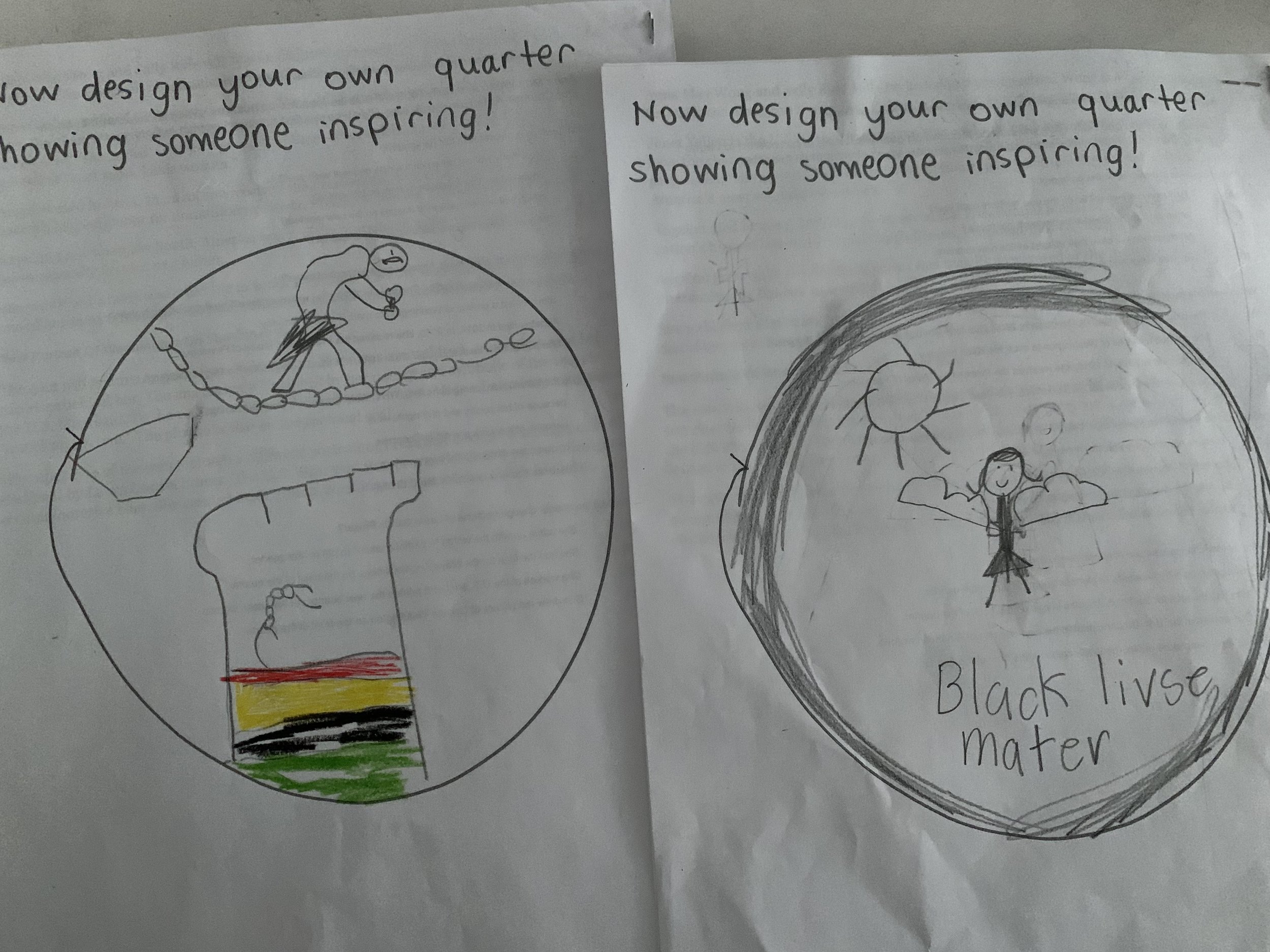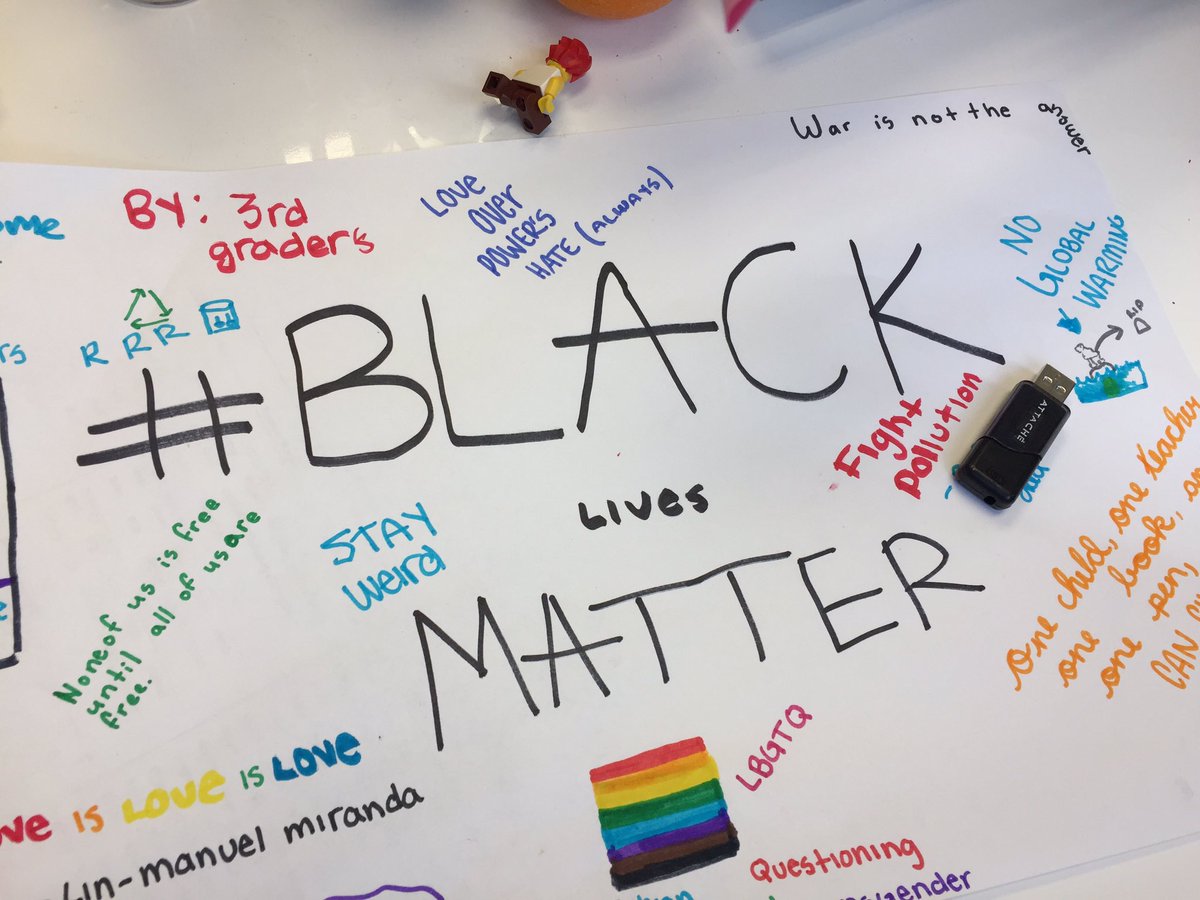Seeing all of the activity around Black History Month on various social media platforms inspired me to write a blog post again (I know it has been a long time - I (Nina) was busy having a baby!). I am on maternity leave, so won’t be teaching in a classroom this February, but will link to some of our past posts with our ideas and reflections.
My memories of Black History Month when I was in elementary school are pretty vague, but I remember learning about Dr. Martin Luther King Jr. and maybe even singing some songs about how he helped our country. As an elementary school teacher myself, I definitely have had to teach into the idea that Dr. Martin Luther King Jr. “fixed” racism in our country or that racism was something bad from our past. You can read more about one way we approached MLK Day in the past here. The past few years, my co-teacher and I have been participating in Black Lives Matter at School week. It’s a nationwide movement that occurs the first week of February.*
It’s important when teaching history (especially to concrete third graders) to tie it to the present, and I always think about any of the “history” months (Black History Month, Women’s History Month, etc) through this lens. Starting with Black Lives Matter at School week is a great way to do this. You can read more about our participation in Black Lives Matter at School week and get some resources and ideas for Black History Month here, as well as read our reflections after participating with more details about how we chose to approach the week in our classroom here.
I’m sure we’ve said this before, but it’s also really important not to relegate Black history to one month of the year (we love the title of the book How Long 'Til Black Future Month, has anybody gotten their hands on this one yet??). Black history is American history and should be part of our curriculum year round. Also, our curriculum should reflect our world, and the world we want our students to live in.
Some things to keep in mind when approaching Black History Month:
Since your curriculum reflects the diversity of our world, you do not need to cover all of Black history in one month (often times depth in one area they didn’t know about can be more quality instruction with essential ideas than the grand sweep over conversation). Choose your focus based on student interests, knowledge, or ignorance or what works well with other units. Students will often need background information and time to process, so it is far better to cover something in depth than give them information out of context.
Make sure you have time for student reflection and feedback. We had a student who wrote a comment on an article we read that helped us know what we wanted to do next. Open ended comments and reflections also let students have a way to let you know what they are thinking and feeling.
Give students opportunities to share and process, but do not expect Black students to share or answer other students’ questions. They are not in the classroom as examples to white students. Also, make sure students of color have a way to communicate with you in case they need to process or feel uncomfortable about the way something is framed or understood by others.
Think critically about the resources you use (which of course we teachers do each and every day). Just because a picture book is about a Black historical figure does not mean that it is a good resource for your students. Think about framing, whose story or voice is highlighted, and unintentionally reinforcing stereotypes. Also consider context you might have to provide for the resources you choose (if there is slang, slurs, or historical terms your students don’t understand -- ie: the use of “Negro”, for example, you have to prepare to teach into these!).
As a side note beneath this- we are huge fans of explicit vocabulary instruction. Students rarely have opportunities to have these conversations, and when they do, the big ‘adult words’ do not get broken down for them and that is a missed opportunity for learning and excludes them from participating in the conversation. Freyer models, group work, vocabulary logs or what have you-- you can bring your Black history vocabulary into systems you already have!
Use original sources! There are so many ways to do this. Some ideas are through videos of historical events or speeches on YouTube, adapted text of speeches or letters on Newsela, and documents. It is a wonderful way to bring history to life and preserve the voice and intent of the primary source.
Poems can be an excellent way to start. I have always believed we need to use poetry more in all subjects. For example, the beginning of the Langston Hughes poem, “Let America Be America Again” is below. Have students read the poem and write connections and questions. Also, teach them about Langston Hughes! We’ve also used poems from Jacqueline Woodson’s Brown Girl Dreaming (if you are stuck on where to start, she has so many wonderful books for a variety of ages!).
Let America be America again.
Let it be the dream it used to be.
Let it be the pioneer on the plain
Seeking a home where he himself is free.
(America never was America to me.)
Let America be the dream the dreamers dreamed—
Let it be that great strong land of love
Where never kings connive nor tyrants scheme
That any man be crushed by one above.
(It never was America to me.)
-Langston Hughes, from Let America Be America Again
Please share your thoughts and ideas below! We’d love to hear what other educators are trying out this month. I especially enjoy hearing about other classrooms as I am away from my own students right now.
*We love Teaching For Change and if you want resources or a good community in the DMV area they are worth connecting with and receiving emails from!
**This asterik is from Gabby just to note that she has yet to see schools that she has been working in, in Oregon, participating in BLM week. Of course, the work continues!
Subscribe to our blog:





























